It’s interesting to see how vision evolves over time. At one time, I started taking pictures and was happy (and amazed) with everything that I got. I was trying out all kinds of things, taking pictures of the world and its mother and grandmother. Everything was good to shoot. Quality was constantly admired and never questioned.

My first “amazing” picture with lots of details was this one. Obviously composition and other elements leave to be desired. So, while this was a nice achievement by itself, it was not enough for me to say that this was all.
The next picture, mostly in the same place in Ukraine, was already way better. More details, more of everything, including a more pleasant background. At least that’s what I thought.
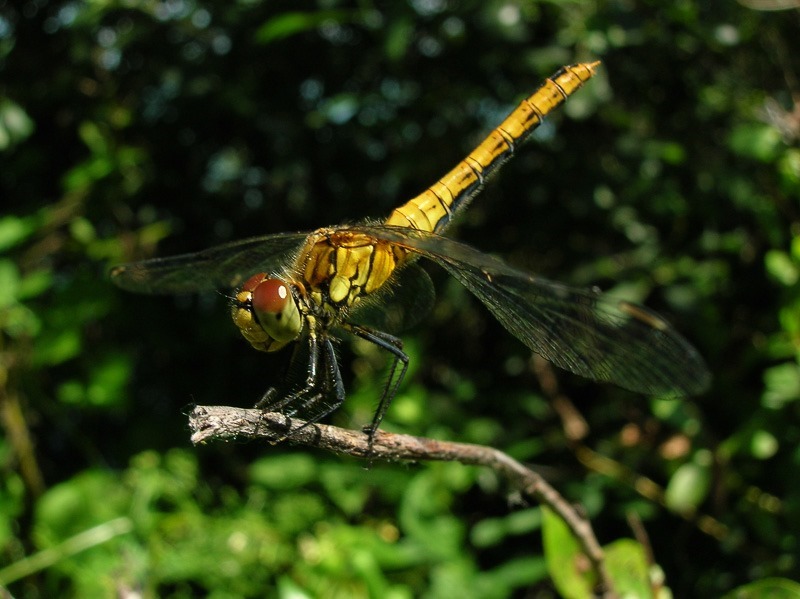 Ukrainian dragonfly
Ukrainian dragonfly
Being able to see the body hairs of the creature was a big plus. It showed that focus was great and that I succeeded in taking pictures of fairly unwilling subjects. These dragonflies were very skittish, approaching them was quite the feature. After about three dozen attempts, the above picture was great.
A few years later I changed cameras and lenses. Lots of other tryouts were done, but in a way, the 18-55mm kit lens never seemed to obtain the same quality as the point and shoot of my earlier days. So I abandoned the idea of shooting macro subjects.
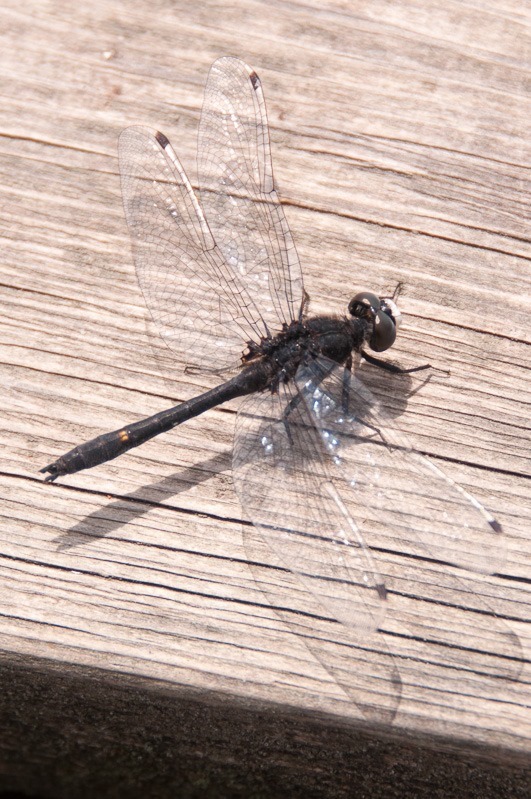 Dragonfly at rest
Dragonfly at rest
Then I bought a “huge” lens, my walkabout lens of 28-300mm. I have already blogged about this great lens and will not say anything bad about it. It allows me to get very close to the skittish critters and get pretty good pictures. Details are great, the dragonflies come out great and show lots of their beauty.
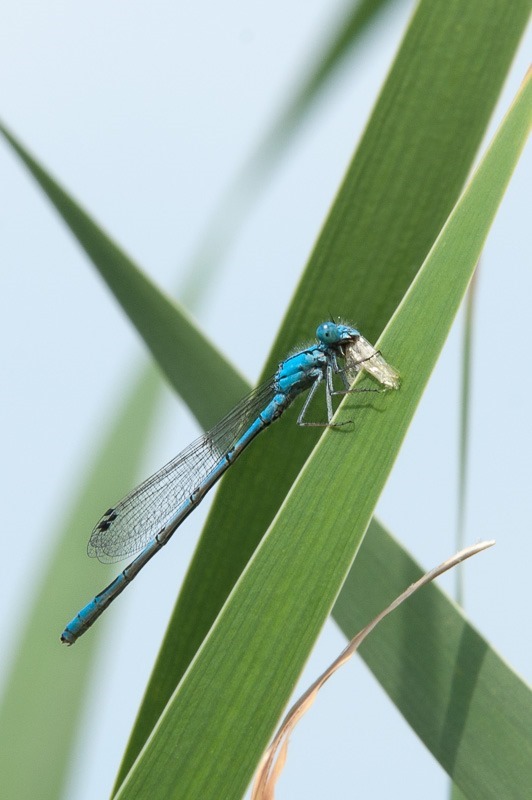 Damselfly with lunch
Damselfly with lunch
Even the smaller damselflies share some of their visually hidden secrets. In the above Damselfly with lunch, the teeth and open “mouth” are clearly visible. Now those are details! But somehow there are details that still escape me, or at least my lens.
 Cherry faced Meadowhawk
Cherry faced Meadowhawk
Some time ago, I bought a 60mm fixed focus macro lens. Since it is a fixed focal length, the zoom is in my legs. In itself the whole process of getting a picture of a creature changes. Now it becomes a hunt, instead of zooming in and shooting. It’s like going from sniping to hand-to-hand combat.
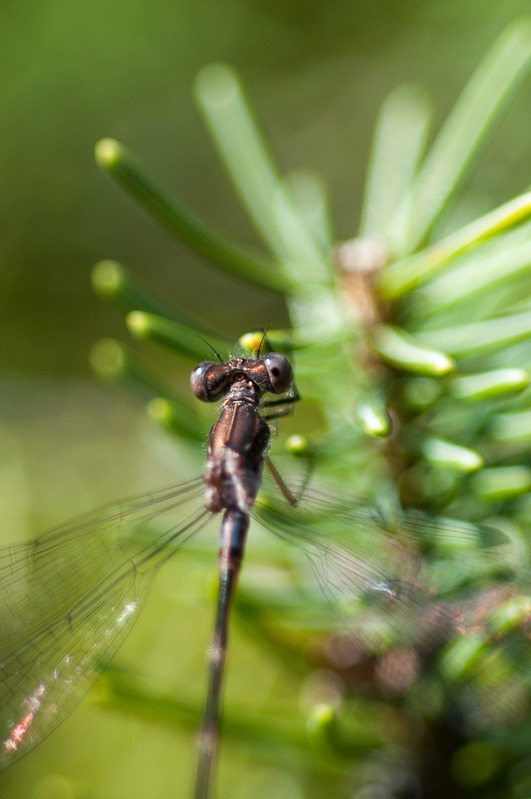 Damselfly
Damselfly
Useless to say that I lose many battles with the creatures. Happily with no harm done to either party except to my ego. After a workshop with one of our expert macro photographers I learned a lot about how to approach the insects without scaring them away immediately. They still fly away, but I now get more good results.
Also how to place the camera to get the best results, that is not always the most certain way to get a shot, though. Those insects will sit quiet for a while, but only for so long. After that, they fly away without so much as a “good bye-buzz”.
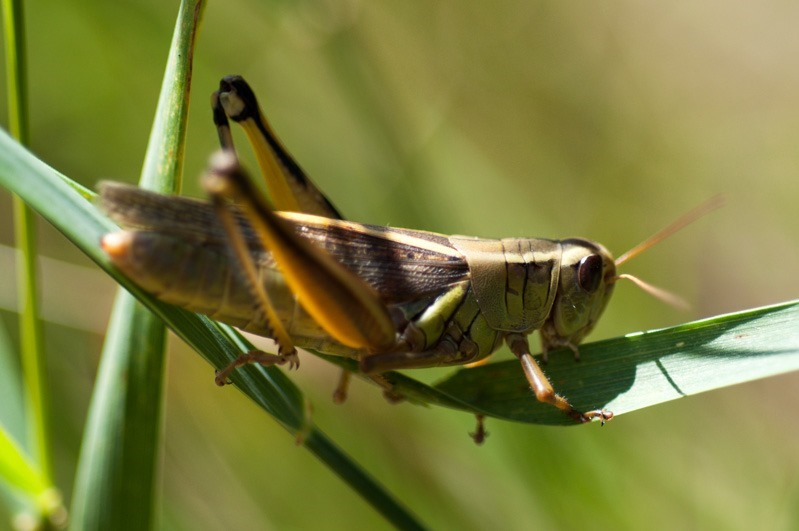 Grasshopper up close
Grasshopper up close
But having a macro lens that is capable of reproducing the subjects at a 1:1 ratio on your sensor must have more capabilities than a half in focus dragonfly. What about those eyes? Apart from the electron microscope pictures of (dead) flies where you can see the facets of the eyes, for example, a macro lens should be able to get you really close to that.
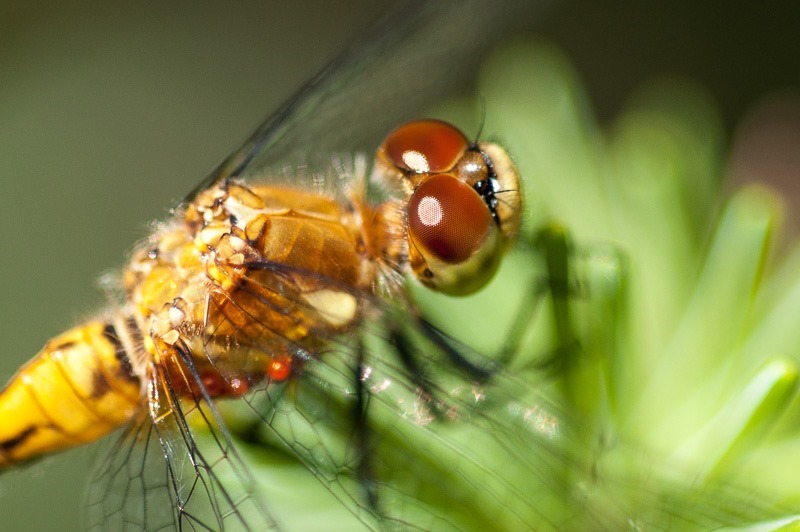 Closer to the dragonfly
Closer to the dragonfly
If a point and shoot can give me lots of details, then a macro lens should show me more, right? Well, all depends on how close you can get to the subjects. The above picture was taken about 25cm away from the dragonfly and details in the eyes start to be visible. YAHOO!
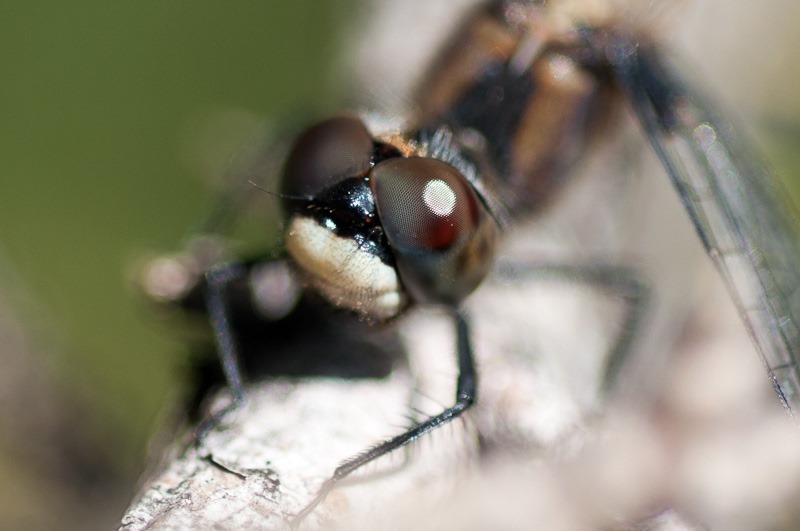 Very close dragonfly
Very close dragonfly
So the idea is to get even closer. Getting closer also means getting less of the creature in focus. Dragonflies can be up until 10cm long, no way you can get that with one shot. And the dragons rarely allow you more than one shot to begin with, they react to the sound of the shutter as well. So now is the time to focus on the eyes and make sure that they are really in focus. My latest result is the last picture. Taken from about 9cm away.
So, while my point and shoot pictures were really “amazing”, little by little I “upped the ante” to get better pictures. For now I will try and exercise more with the macro 60mm to get more shots. I am sure that this lens has more to offer than a few “simple” close-ups.
Vision evolves over time, so do the expectations of the material you shoot with.
Until next time…
